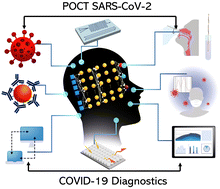Recent advances in point-of-care testing of COVID-19
Abstract
Advances in microfluidic device miniaturization and system integration contribute to the development of portable, handheld, and smartphone-compatible devices. These advancements in diagnostics have the potential to revolutionize the approach to detect and respond to future pandemics. Accordingly, herein, recent advances in point-of-care testing (POCT) of coronavirus disease 2019 (COVID-19) using various microdevices, including lateral flow assay strips, vertical flow assay strips, microfluidic channels, and paper-based microfluidic devices, are reviewed. However, visual determination of the diagnostic results using only microdevices leads to many false-negative results due to the limited detection sensitivities of these devices. Several POCT systems comprising microdevices integrated with portable optical readers have been developed to address this issue. Since the outbreak of COVID-19, effective POCT strategies for COVID-19 based on optical detection methods have been established. They can be categorized into fluorescence, surface-enhanced Raman scattering, surface plasmon resonance spectroscopy, and wearable sensing. We introduced next-generation pandemic sensing methods incorporating artificial intelligence that can be used to meet global health needs in the future. Additionally, we have discussed appropriate responses of various testing devices to emerging infectious diseases and prospective preventive measures for the post-pandemic era. We believe that this review will be helpful for preparing for future infectious disease outbreaks.

- This article is part of the themed collection: Celebrating the scientific accomplishments of RSC Fellows


 Please wait while we load your content...
Please wait while we load your content...